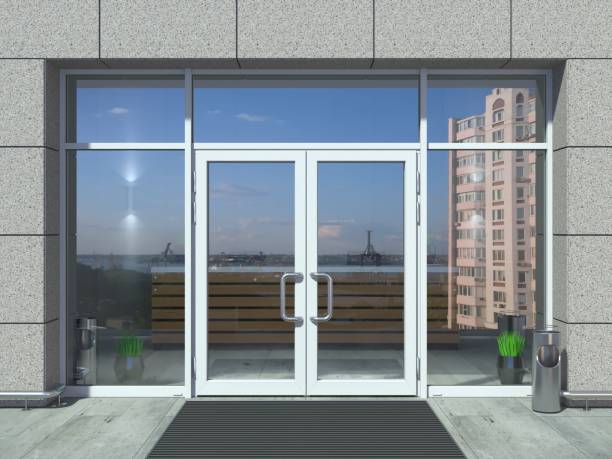The Evolution and Significance of Industrial Units in Modern Manufacturing
In today’s fast-paced economic landscape, industrial units play a pivotal role in shaping the future of manufacturing and production. These units, which encompass factories, workshops, and various production facilities, have evolved significantly over the years, adapting to technological advancements and changing market demands. This article delves into the history, types, benefits, and challenges of industrial units, highlighting their significance in contemporary industry.
A Brief History of Industrial Units
The concept of industrial units dates back to the Industrial Revolution in the late 18th century, when mechanization began to transform traditional handcrafting methods into mass production. Factories emerged as centralized locations for production, enabling businesses to increase efficiency and scale up operations. Initially, these units were characterized by large machinery, high labor demands, and the exploitation of workers, leading to significant social and economic changes.
As the decades progressed, the introduction of new technologies—such as electricity, assembly lines, and computerization—transformed industrial units into more sophisticated and efficient environments. The rise of globalization further influenced the design and operation of these units, prompting companies to rethink supply chains and production strategies.
Types of Industrial Units
Industrial units can be categorized into several types, each serving distinct purposes within the manufacturing sector:
Manufacturing Plants: These facilities are dedicated to producing goods, ranging from consumer products to heavy machinery. They often involve complex processes that require specialized equipment and a skilled workforce.
Warehouses: While not strictly manufacturing units, warehouses play a crucial role in the supply chain by storing finished goods and raw materials. They are essential for inventory management and distribution logistics.
Research and Development Centers: Many industrial units now incorporate R&D facilities to foster innovation and improve product quality. These centers focus on developing new technologies, materials, and processes.
Assembly Units: These units focus on bringing together various components to create a finished product. They are common in industries like electronics and automotive, where precision and efficiency are paramount.
Process Industries: Units in this category, such as chemical plants or food processing facilities, focus on converting raw materials into consumable products through chemical, physical, or biological processes.
Benefits of Industrial Units
The establishment of industrial units offers numerous advantages, both for businesses and the economy as a whole:
- Increased Efficiency: Modern industrial units leverage automation and advanced technologies to streamline production processes. This not only boosts productivity but also reduces waste and lowers operational costs.
- Job Creation: Industrial units generate employment opportunities for a wide range of skill levels. From skilled labor to managerial positions, these units contribute significantly to local economies.
- Economic Growth: By fostering innovation and increasing production capacity, industrial units drive economic development. They can attract investments, support local businesses, and contribute to the overall growth of a region.
- Flexibility and Adaptability: Today’s industrial units are designed to be flexible, allowing manufacturers to adapt quickly to changing market demands. This agility is essential in a globalized economy where consumer preferences can shift rapidly.
- Sustainability Initiatives: Many industrial units are increasingly focused on sustainability, incorporating eco-friendly practices and technologies. This commitment not only helps reduce environmental impact but can also lead to cost savings and improved brand reputation.
Challenges Facing Industrial Units
Despite their many benefits, industrial units also face several challenges that can hinder their effectiveness:
Technological Obsolescence: Rapid technological advancements can render existing equipment and processes outdated. Keeping up with the latest innovations requires significant investment and continuous training for employees.
Supply Chain Disruptions: Global events, such as pandemics or geopolitical tensions, can disrupt supply chains, impacting production timelines and costs. Industrial units must develop resilience strategies to mitigate these risks.
Workforce Shortages: The skilled labor shortage is a pressing issue for many industries. Attracting and retaining talent, particularly in technical fields, is essential for maintaining competitiveness.
Regulatory Compliance: Industrial units must navigate a complex landscape of regulations concerning health, safety, and environmental standards. Compliance can be costly and time-consuming, particularly for smaller businesses.
Sustainability Pressure: As consumers become more environmentally conscious, there is increasing pressure on industrial units to adopt sustainable practices. Balancing profitability with environmental responsibility can be challenging.
The Future of Industrial Units
Looking ahead, the future of industrial units will be shaped by several key trends. The integration of artificial intelligence and the Internet of Things (IoT) is expected to revolutionize manufacturing processes, enabling greater automation and real-time data analysis. Additionally, the rise of additive manufacturing, or 3D printing, presents new opportunities for customization and efficiency.
Moreover, as sustainability becomes a priority, industrial units will likely focus more on circular economy principles, aiming to minimize waste and maximize resource use. Collaborative approaches, such as partnerships with local communities and businesses, will also be vital in fostering innovation and driving economic growth.
Conclusion
Industrial units are the backbone of modern manufacturing, evolving continuously to meet the demands of a dynamic marketplace. Their significance extends beyond mere production; they contribute to economic growth, job creation, and innovation. While challenges abound, the potential for industrial units to adapt and thrive in the face of change is immense. Discover More As we move into the future, the ongoing evolution of these units will undoubtedly play a crucial role in shaping the global economy and the way we produce goods.














Post Comment